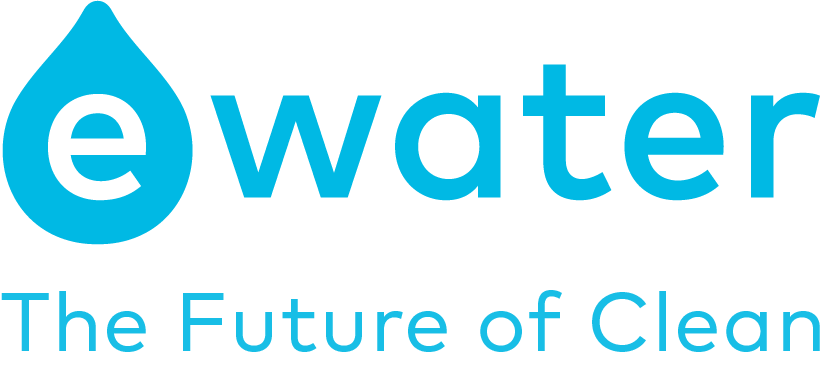Biofilm formation of foodborne pathogens on food processing surfaces is a major concern for the food industry. In a recent study, published in the peer reviewed journal, Frontiers in Microbiology, AEW (eWater Sanitiser) was studied as an effective sanitising agent for biofilms.
More than 80% of the bacterial infections in the human population are associated with biofilms and approximately 60% of foodborne outbreaks are caused by biofilms. Furthermore, compared to planktonic cells, biofilm-associated cells are more resistant to external stresses such as antibiotics and detergents, thus they are extremely difficult to eliminate resulting in the onset of foodborne illness.
Findings from Study
The mode of action of conventional sanitizers to control of foodborne pathogen biofilms is antibacterial rather than EPS matrix disruption
AEW causes the degradation of bacterial protective barriers like EPS and increases membrane permeability.
The researchers proposed that EPS disruption could be the basic mechanism of biofilm removal by AEW treatment.
Biofilm viable cells dispersed by AEW into the ambient environment during disinfection were below detectable levels, thus reducing secondary pollution.
The researchers concluded that AEW is an excellent alternative to sanitizers and can be applied to control biofilms in food processing facilities as well as protecting foods from cross-contamination.
Controlling pathogen biofilm formation is hindered by their complex structures which limits the diffusion of sanitizers into the deepest layers of biofilms. In this study, the research team found that AEW had the ability to disrupt these structures and effectively eradicate foodborne biofilms. Interested in more detail? See below for the full study abstract.
See how our Customers are using eWater
Abstract of Study
Foodborne pathogens which persist in food processing facilities grow predominantly as biofilms rather than in planktonic mode. Biofilms are complex communities of microorganisms attached to biotic or abiotic surfaces and protected them by providing firm three-dimensional, multicellular, complex, self-assembled structures that contain extracellular polymeric substances (EPS) (exopolysaccharides, proteins, and extracellular DNA, etc.) (Costerton et al., 1999; Hall-Stoodley et al., 2004).
The mode of action of conventional sanitizers to control of foodborne pathogen biofilms is antibacterial rather than EPS matrix disruption (Gao et al., 2016), and any bacteria in the biofilms that survives the sanitizer treatment may initiate biofilm regrowth (Bridier et al., 2015).
Thus, novel approaches that include disruption of EPS formation and at the same time kills or removes biofilm cells would be highly desirable (Allaker and Memarzadeh, 2014; Wang et al., 2016).
Acidic electrolyzed water has been documented to be an effective disinfectant for inactivating foodborne pathogens including Escherichia coli, Vibrio parahaemolyticus, and Listeria monocytogenes (Kim et al., 2000; Wang et al., 2014). The postulated mode of action is reduction of cell wall, nucleus, and outer membrane integrity which leads to the rapid leakage of intracellular DNA and proteins (Zeng et al., 2010, 2011; Ding et al., 2016).
Additionally, AEW is an environmentally friendly sanitizer and poses minimal risk to human health (Mori et al., 1997; Wang et al., 2014). Above all, many studies have shown the bactericidal effect of AEW on planktonic pathogens, but study on the applying the AEW for removing foodborne pathogen biofilms is still lacking. Therefore, this study attempted to use the AEW as a novel scavenger to control foodborne pathogen biofilms and evaluated the eradication effect of AEW on biofilms and EPS disruption.
Acidic electrolyzed water electrolyzed at different NaCl concentration was characterized by pH, ACC, and ORP. Different NaCl concentrations produced different ACC which affected the efficiency of AEW on E. coli biofilms (Table 1). High ACC causes changes in metabolic compounds within biofilm cells, causing cell death and removal. However, the pH and ORP of AEW were not the main factor contributing to bactericidal ability.
A similar finding was reported by both Sun et al. (2012) and Vázquez-Sánchez et al. (2014) who concluded that the available chlorine in AEW might be one of the main factor for the inactivation of S. aureus biofilms. In addition, AEW inactivated bacteria due to the oxidative ability of ACC against the cell membrane, various metabolic functions, etc. (Huang et al., 2008).
Additional Studies on AEW
Specifically, AEW causes the degradation of bacterial protective barriers like EPS and increases membrane permeability.
This study shows that EPS disruption could be the basic mechanism of biofilm removal by AEW treatment. The present study hypothesized that the mechanism underlying EPS disruption and biofilms eradication upon exposure to AEW may be associated with ionic interactions. These interactions caused biofilm eradication by changing EPS hydrophobicity and localized charge along the polymer chains.
Additionally, the residual cells that escape after exposure to disinfection may further adhere and grow, resulting in a complex matrix (Molobela et al., 2010). These dispersed cells from biofilm showed stronger recalcitrance to disinfection than planktonic cells.
One finding from this study was that biofilm viable cells dispersed by AEW from the biofilm matrix into the ambient environment were under the detection limit, thus AEW treatment may not cause secondary pollution.
Reported Conclusion
AEW is an excellent alternative to sanitizers and can be applied to control biofilms in food processing facilities as well as protecting foods from cross-contamination.



